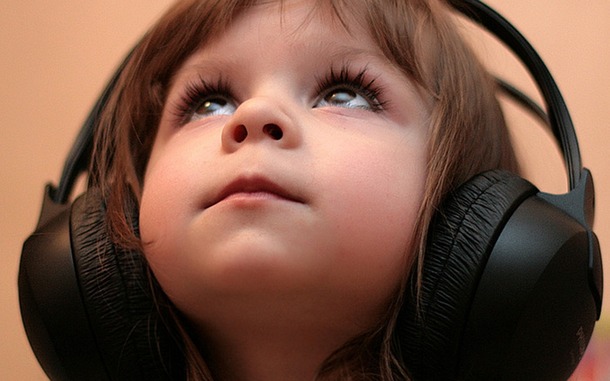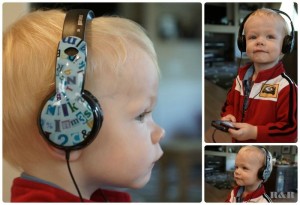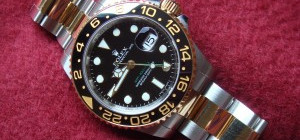 You already know that loud noises can damage your hearing. You might not know, however, that headphones and earphones can damage your hearing more than huge boom boxes, car stereo speakers, construction equipment, and rumbling motor vehicles, according to the Stony Brook School of Medicine.
You already know that loud noises can damage your hearing. You might not know, however, that headphones and earphones can damage your hearing more than huge boom boxes, car stereo speakers, construction equipment, and rumbling motor vehicles, according to the Stony Brook School of Medicine.
The reason that headphones and earphones can cause so much damage is simple: they deliver noise directly into your ear, while a much louder firecracker delivers the noise into the air. Consequently, parents need to monitor their children, particularly teenagers who enjoy listening to loud music, to make sure that headphones and earphones don't damage their hearing.
“If you can hear the music your child/teenager is playing through their headphones or earphones, it means the sound is too loud and can lead to permanent hearing loss," said Stony Brook pediatric otolaryngologist Wasyl Szeremeta.
Symptoms of noise causing damage to your hearing include pain in the ears, ringing in the ears, having to be shout to be heard, and having difficulty hearings for hours after being exposed to the noise, according to the American Academy of Otolaryngology-Head and Neck Surgery.
To understand how headphones and earphones can cause hearing loss, you need to understand the connection between decibels and hearing loss as well as the decibel levels of various noises. Decibel levels of about 80 and under are safe, according to Stony Brook. Whispers are 30 decibels, normal conversations are 60 decibels, and traffic noise is 80 decibels.
Decibel levels of about 90, though, can cause gradual hearing loss over time, while decibel levels of about 140 can cause permanent hearing loss. Lawnmowers and motorcycles typically emit noises of 90 decibels, chainsaws and snowmobiles typically emit 110 decibels, and firecrackers and rock concerts typically emit 140 decibels.
Teenagers probably aren't listening to chainsaws, snowmobiles, firecrackers and rock concerts for a few hours per day - but they might be piping music into their ears via headphones or earphones for that period of time.
"Most portable stereo music systems produce sound in the range of 95-108 dB (decibels) at level four (volume settings) and in excess of 115 dB at level eight," according to Stony Brook.
The school's research has found that you can suffer hearing loss if you listen to a 95-decibel noise for four hours per day, a 100-decibel noise two hours per day, a 105-decibel noise one hour per day, a 110-decibel noise 30 minutes per day, a 115-decibel noise 15 minutes per day, and a 120-decibel noise "almost immediately."
"Continual exposure to more than 85 decibels can be dangerous," adds the Stony Brook website.
Fortunately, you can reduce the decibel level of the noise emanating from a stereo system if you buy the proper headphones or earphones. Reviewed.com explains how in this article: "Noise-Induced Hearing Loss and You."
Basically, proper headphones and earphones can prevent noise-induced hearing loss by reducing how much outside noise from reaching your ears. When outside noise is reduced, you can reduce the volume of the music that is attached to your headphones or earphones.
The Best Headphones for Preventing Hearing Damage
Here are a few of our favorite headphones that block out background noise - meaning your teenager will be (slightly) less inclined to crank up their music in the name of better sound.
* Under $200: AudioTechnica QuietPoint Noise Cancelling Headphones: Feeling fancy? These headphones are advertised as blocking background noise by 90%-perfect for teenagers (and adults, of course) who travel frequently and want to block out a constant drone without blasting their music. For your teen who can't make it through a road trip without napping, these also work well thanks to their extra cushioning.
* Under $100: AfterShokz Bluez Open Ear Wireless Headphones: These headphones are placed on your head rather than in your ears. This "bone conduction" technology makes listeners more aware of their surroundings.
* Under $30: dB Logic EP-100: Your teenager will love these for the wide variety of colors, and you'll love them because they have a max volume of 85 decibels and decrease background noise.
* Under $20: Maxwell Safe Soundz Headphones: These headphones also have maximum decibel level technology. More remarkably, they come in different sizes for children of different ages and the maximum decibel level settings are lower for younger children. Some headphones have a maximum decibel level of 65.
* Under $10: Ultimate Ears Noise-Isolating Earphones: These budget-friendly ear buds block background noise and come in a wide selection of colors. This brand also carries headphones designed specifically for children - a mini version of the standard phones, the kid's version also reduces the maximum volume by about 30%.












